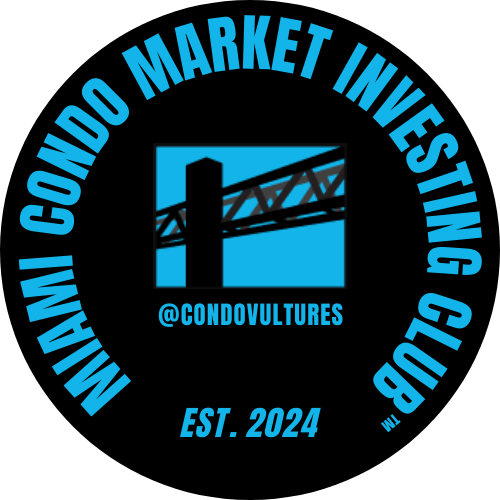Which Are Best, Worst Condo Markets For South Florida Investors?
This is a ranking of the 17 South Florida coastal condo markets from an investors perspective.

We crunch a lot of statistics each week and then publish a series of reports with our findings on CondoVultures.com. If you want the reports emailed to you, just sign up for the Miami Condo Market Intelligence Report With Peter Zalewski™ newsletter at: PeterZalewski.substack.com
South Florida condo prices have spiked since 2021, making it increasingly challenging for profit-driven investors who want to purchase units in the coastal tricounty region of Miami-Dade, Broward and Palm Beach.
Rising property values from strong demand, skyrocketing insurance prices following the Surfside condo collapse disaster and high interest rates from a series of hikes by the Federal Reserve brought the South Florida housing market to a standstill in the second half of 2023.
Industry watchers are at odds as to the direction of the South Florida housing market in 2024.
Join the Miami Condo Market Investing Club™ to see the complete chart that analyzes the South Florida’s 17 coastal condo markets
Bullish investors are predicting housing demand will reignite once interest rates begin to fall. Bearish investors contend that home prices are too high and likely to collapse in the months ahead.
To better understand whether the statistics support the bulls or the bears, we have run the numbers during the last four months. We have collected the key statistics on condos, luxury condos, distressed condos and rentals for all 17 coastal markets, stretching from Miami’s Coconut Grove north to Downtown West Palm Beach And The Island.
All of our statistics have been published in a series of reports posted on this website between January and early May.
Now, we are combining all of the previously compiled condo and rental statistics to create a series of reports to better identify the best and worst markets in South Florida based on the numbers.
Before revealing our findings, it is important to spell out our approach.
Firstly, investors have the goal of purchasing condos that provide an annual return and may even sell at a higher price in the future. Alternatively, speculators purchase condos in hopes of reselling their units at a substantial premium in the future. Annual returns, however, are desired but not a necessity for speculators.
Secondly, it can be challenging to compare areas that are as vastly different as Miami’s Little Havana and the Downtown Boca Raton And Beach market in Palm Beach County.
To overcome this obstacle, we are ranking South Florida’s 17 coastal condo markets based on the “1 Percent Rule” of real estate.
The Investopedia website explains that the rule “is used to determine if the monthly rent earned from a piece of investment property will exceed that property's monthly mortgage payment. The goal of the rule is to ensure that the rent will be greater than or—at worst—equal to the mortgage payment, so the investor at least breaks even on the property.”
For example, a $100,000 condo should generate about $1,000 in monthly rent.
Investopedia goes on to state that the “1% Rule” can “help an investor gauge the risk and potential gain that might be achieved by investing in a property.”
The “1% Rule” is clearly a “back of the napkin” approach that is not foolproof but it can save investors the time needed to conduct a complete evaluation of a prospective property.
Thirdly, rental statistics are unreliable in Florida. Unlike in a real estate sale, landlords do not have to record any documentation with a local government. Therefore, there is no paper trail available for the public to verify the terms of the lease.
Additionally, most corporate landlords - such as Real Estate Investment Trusts - do not list their apartments for rent with Realtors who can then input the properties into the Multiple Listing Service database.
Instead, these corporate landlords usually handle the marketing and leasing internally, in part, to save on paying commissions. As a result, obtaining rental statistics from corporate landlords can be almost impossible. When corporate landlord rental statistics are available, they are generally nothing more than a survey response.
For all of these reasons and more, we would tell you that rental statistics should always be doubted.
All this being said, here is a pared-down chart ranking South Florida’s 17 coastal condo markets based on the “1% Rule.”
Keep in mind when reviewing the chart, the goal of an investor for this report is to buy a condo at a price that will generate one percent of the purchase price each month. Ideally, the “Overinflated” column (highlighted in yellow) in this chart should be zero percent, meaning the monthly rent satisfies the “1% Rule.”
To see the complete chart, you have to be a member of the Miami Condo Market Investing Club™. Click here to join.
Besides being able to view our paywall-protected content, Club members are also given access to our Monthly Meetings at Noon (EST) on the second Wednesday of every month. At these virtual meetings, we discuss the latest condo trends before ending with a Questions & Answers period.
In addition, Club members receive discounts on events, including the Miami Condo Correction Walking Tours that are held on Saturdays.





